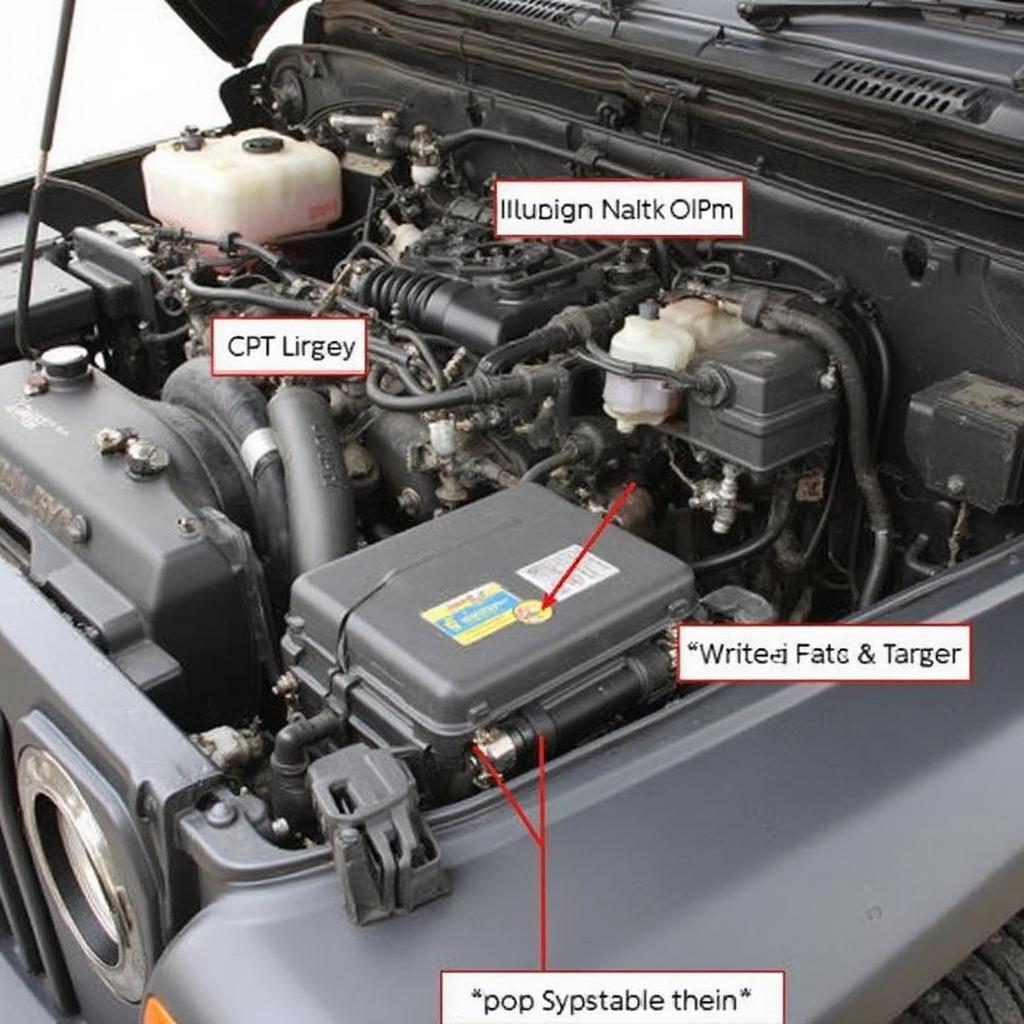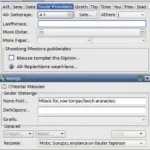The 2004 Jeep Wrangler’s Powertrain Control Module (PCM) and its interaction with the OBD2 system are crucial for diagnosing and fixing issues. This guide explores everything you need to know about the 2004 Jeep Wrangler PCM OBD2, from understanding its function to troubleshooting common problems.
Understanding the 2004 Jeep Wrangler PCM
The PCM is the brain of your Jeep’s engine, controlling vital functions like fuel injection, ignition timing, and emissions. It constantly monitors various sensors and adjusts engine parameters to ensure optimal performance and efficiency. For a 2004 Jeep Wrangler, understanding the PCM and how it communicates via the OBD2 port is essential for any owner.
Why the PCM is Important
The PCM is the central hub for managing your engine’s performance and emissions. A malfunctioning PCM can lead to a variety of problems, from decreased fuel economy to complete engine failure. Knowing how to access and interpret the data from your 2004 Jeep Wrangler’s PCM via the OBD2 port is crucial for diagnosing and resolving these issues.
 2004 Jeep Wrangler PCM Location
2004 Jeep Wrangler PCM Location
How the OBD2 System Works with the PCM
The OBD2 system provides a standardized interface to communicate with the PCM. By connecting an OBD2 scanner, you can access diagnostic trouble codes (DTCs), real-time data, and other valuable information that can help pinpoint problems within your Jeep’s systems. This is incredibly helpful for understanding the performance and health of your 2004 Jeep Wrangler’s engine.
Troubleshooting 2004 Jeep Wrangler PCM OBD2 Issues
When your Jeep’s check engine light illuminates, it’s a signal that the PCM has detected a problem. Using an OBD2 scanner is the first step in diagnosing the issue.
Common 2004 Jeep Wrangler OBD2 Codes
Several OBD2 codes are commonly associated with 2004 Jeep Wranglers. These can range from oxygen sensor issues (P0135, P0155) to misfires (P0300 – P0306) and even problems with the evaporative emissions system (P0442, P0455). Understanding these codes and what they indicate is critical for effective troubleshooting.
Using an OBD2 Scanner for Diagnostics
An OBD2 scanner allows you to retrieve and interpret DTCs stored in the PCM. Some scanners also provide live data streams, allowing you to monitor sensor readings in real-time. This real-time data can be invaluable for diagnosing intermittent problems that might not trigger a DTC.
What if I Can’t Read the OBD2 Port?
Sometimes, communication issues can prevent the OBD2 scanner from connecting to the PCM. This could be due to a blown fuse, a wiring problem, or even a faulty PCM. Checking the fuses and wiring related to the OBD2 system is a good starting point.
“A common oversight is forgetting to check the OBD2 port’s fuse. It’s a simple check that can save you a lot of troubleshooting time,” says John Miller, Senior Automotive Diagnostic Technician at Miller’s Auto Repair.
Choosing the Right OBD2 Scanner for Your 2004 Jeep Wrangler
Not all OBD2 scanners are created equal. Some offer basic functionality, while others provide advanced features like live data streaming, bi-directional control, and ABS diagnostics.
Types of OBD2 Scanners
From basic code readers to professional-grade scan tools, understanding the different types of OBD2 scanners is crucial for making an informed purchase. Consider your budget and diagnostic needs when choosing a scanner.
Features to Look For
Key features to consider include code reading and clearing, live data streaming, compatibility with your 2004 Jeep Wrangler, and the scanner’s user interface. “Investing in a quality OBD2 scanner is essential for any Jeep owner. It’s a powerful tool that can help you quickly diagnose and fix problems,” advises Sarah Johnson, Certified Automotive Technician and owner of Johnson’s Automotive.
Conclusion
The 2004 Jeep Wrangler PCM OBD2 system is essential for maintaining your vehicle’s performance and addressing any issues that may arise. By understanding how the PCM and OBD2 system work together, and by utilizing the right tools and knowledge, you can keep your Jeep running smoothly for years to come. Regularly checking your 2004 Jeep Wrangler PCM OBD2 system can help identify potential problems early on.
FAQ
- What does the PCM control? The PCM controls engine functions like fuel injection, ignition timing, and emissions.
- How do I access the OBD2 port on my 2004 Jeep Wrangler? The OBD2 port is typically located under the dashboard on the driver’s side.
- What should I do if my check engine light comes on? Use an OBD2 scanner to retrieve the diagnostic trouble codes.
- Can I reset my check engine light with an OBD2 scanner? Yes, most OBD2 scanners allow you to clear DTCs.
- What are some common 2004 Jeep Wrangler OBD2 codes? Common codes include P0135, P0155, P0300-P0306, P0442, and P0455.
- What if my OBD2 scanner won’t connect? Check the OBD2 port’s fuse and wiring.
- What type of OBD2 scanner is best for a 2004 Jeep Wrangler? Choose a scanner that offers live data streaming and is compatible with your Jeep’s model year.
Need help with your 2004 Jeep Wrangler? Contact us via WhatsApp: +1(641)206-8880, Email: [email protected] or visit us at 789 Elm Street, San Francisco, CA 94102, USA. We have a 24/7 customer support team ready to assist you. You may also find helpful information in our other articles on Jeep diagnostics and OBD2 scanner reviews.
